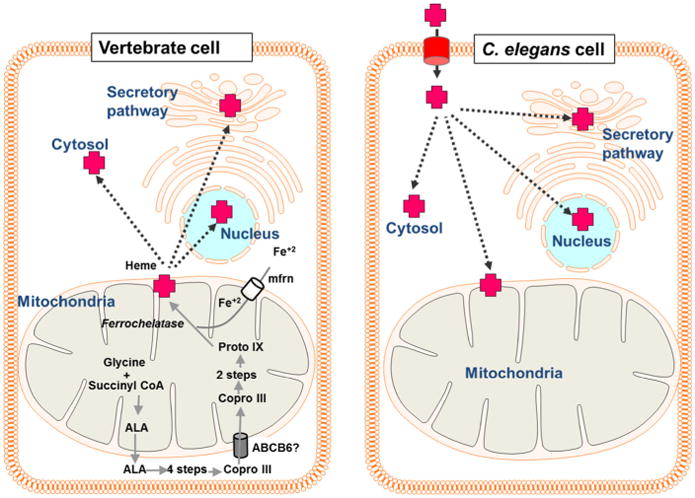Fig. 1.

Heme trafficking in vertebrates and C. elegans. In vertebrate cells, heme is synthesized via an eight-step enzymatic pathway that begins with the synthesis of aminolevulinic acid (ALA) from glycine and succinyl CoA in the mitochondria. ALA is then transported from the mitochondria into the cytosol where the subsequent four steps occur. The intermediate coproporphyrinogen III (Copro III) is transported back into the mitochondria for the final three steps of heme synthesis. The terminal step is the insertion of ferrous iron into the protoporphyrin IX (proto IX) ring by ferrochelatase. Heme is then transported from the mitochondria to hemoproteins in various subcellular locations, including the cytosol, the secretory pathway, and the nucleus. Because C. elegans lacks all eight heme biosynthetic enzymes, all heme must be imported into the cell before incorporation into hemoproteins
